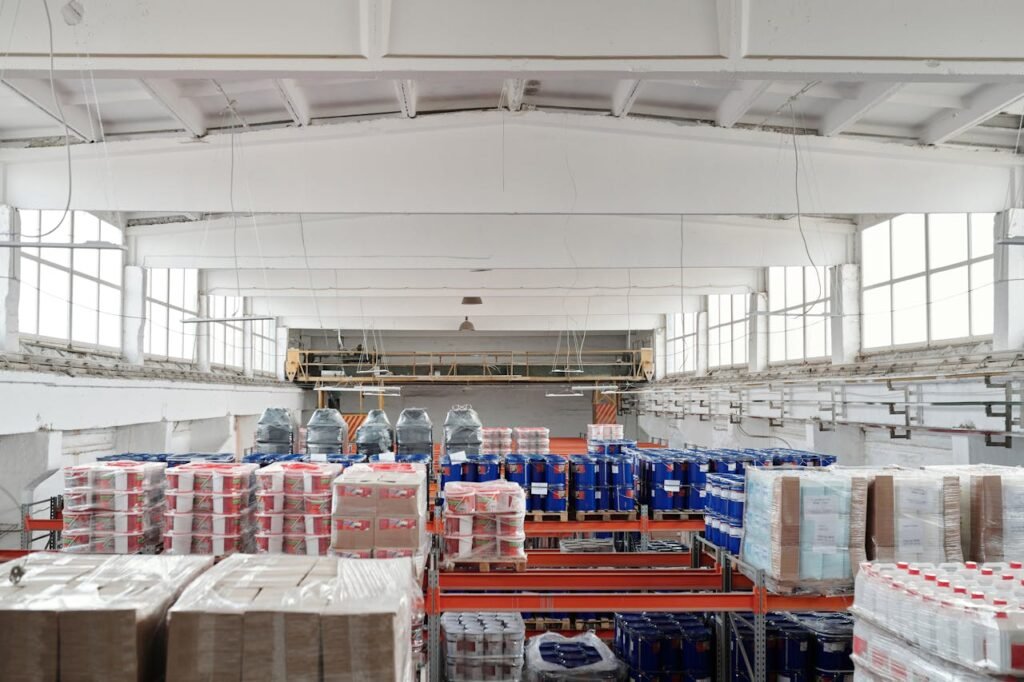Key Takeaways:
- Understanding the critical role of technology in modern warehousing.
- Exploring the latest trends in warehouse management systems.
- Identifying ways to improve inventory accuracy and reduce waste.
- Assessing the benefits of automation and robotics in warehousing.
- Discussing the impact of efficient warehousing on overall supply chain management.
With the continuous pressure to deliver goods faster and more efficiently, efficient warehouse operations have surged to the forefront of supply chain management. These intricate hubs of activity do not simply store goods; they serve as vital links in the logistics chain, affecting everything from turnover rates to customer satisfaction. In a landscape driven by technological innovation, solutions like those offered by WarehousingIT underscore the significant shifts in how modern warehouses are optimized to meet the increased demand for swifter and more precise logistics solutions.
Embracing Technology for Warehouse Modernization
The warehouse environment has drastically changed in the last decade, and technology has driven this transformation. In what can be seen as a digital revolution in warehousing, key technologies like Radio-Frequency Identification (RFID), the Internet of Things (IoT), and cloud computing have converged to create high-efficiency operations. Integrating these sophisticated systems has led to conceptualizing the ‘smart warehouse’—a paradigm shift that embodies real-time management and visibility over every aspect of warehouse function.
Trends to Watch
Stay ahead of competitors by keeping an eye on the emerging trends in warehouse technology. Notably, adopting Internet-enabled devices allows continuous tracking of inventory levels and equipment status. At the same time, AI-driven predictive analytics are becoming indispensable for forecasting demand and optimizing stock levels, mitigating the risks of understocking or overstocking. Furthermore, cloud-based Warehouse Management Systems (WMS) deliver unparalleled flexibility, allowing for remote access and real-time updates from anywhere in the world.
Advancements in Warehouse Management Systems (WMS)
The power and complexity of modern Warehouse Management Systems cannot be underestimated. These platforms are the central nervous system of warehouse operations, embedding automation and streamlined protocols into every function. A cutting-edge WMS can mitigate the chaos of managing a vast inventory by streamlining order processing, establishing a systematic workflow for picking and packing, and facilitating timely dispatch. Look beyond the basic functionalities of these systems, and you’ll find that they also aid in resource planning, reporting, and forecasting, giving managers unprecedented control over their operations.
From Automation to Integration
The scope of WMS extends beyond standalone systems—today’s WMS can seamlessly integrate with other business systems, such as Enterprise Resource Planning (ERP) or Transportation Management Systems (TMS). This integrative approach ensures the fluid movement of goods and information and is crucial for synchronizing complex supply chain activities.
Optimizing Inventory Accuracy and Control
Accurate inventory management is the cornerstone of a well-oiled warehouse. Practical strategies for maintaining stock accuracy, such as cycle counting and scanning technology to update records continually, are central to just-in-time inventory practices. Implementing such methodologies is critical in reducing the expensive detriments of mismanaged inventory — including lost sales, stock shortages, and surpluses — and is fundamental to a lean warehouse operation.
Integrating Automation and Robotics
In the drive towards operational efficiency, the role of automation and robotics within warehouse settings cannot be overstated. Automated Guided Vehicles (AGVs), robotic picking systems, and drones are revolutionizing tasks traditionally dependent on manual labor. This shift is proving to be a boon for speed and accuracy and for the safety of warehouse staff, as robots can be assigned to high-risk tasks or environments that are unsuitable for humans.
Enhancing Supply Chain Efficiency through Effective Warehousing
A well-organized and managed warehouse is a significant factor in a robust supply chain. Precision-driven warehousing practices ensure that goods are stored, located, picked, and transported most cost-effectively and timely. By sharpening warehouse operations, businesses can greatly improve their supply chain agility, allowing them to meet consumer expectations and adapt to market changes easily.
Environmental Sustainability in Warehousing
Environmental sustainability is increasingly becoming a priority in warehouse management. Responsible warehousing practices that focus on reducing energy use, minimizing waste, and implementing recycling initiatives are more than just ethical decisions. They lead to more sustainable operations and can yield financial benefits as they often correlate with increased operational efficiency and reduced operational costs. These practices are essential for companies aligning with global sustainability targets and consumer expectations for eco-friendly operations.
Training and Workforce Development
While technology is transforming warehousing, its success ultimately depends on the individuals operating it. Ensuring that staff is well-trained and comfortable with these advancements is vital for adopting and optimizing new systems. Investing in workforce development through continuous training and skill-building can dramatically enhance the team’s competencies, leading to a more responsive and adaptive warehouse environment.
Understanding the Global Impact of Warehousing
Warehousing extends its influence beyond local boundaries, contributing significantly to the global economy. The strategic location of warehouses, along with their operational efficiencies, play a crucial role in determining the competitiveness of businesses on an international scale. Keeping an eye on the global warehousing market offers valuable insights, highlighting trends, challenges, and opportunities that could influence future strategic decisions.
Warehouse of the Future
As industry leaders envision the future warehouse, they see a tapestry of technological innovations merging with traditional warehousing functions. The advent of more innovative, more agile warehouses is on the horizon, promising a future where technology and human ingenuity collaborate to create seamless, effective, and ecologically responsible supply chain solutions. Entrepreneurs and logistics professionals must stay attuned to these advancements, ensuring they can embrace the transformative wave reshaping the warehousing landscape.

